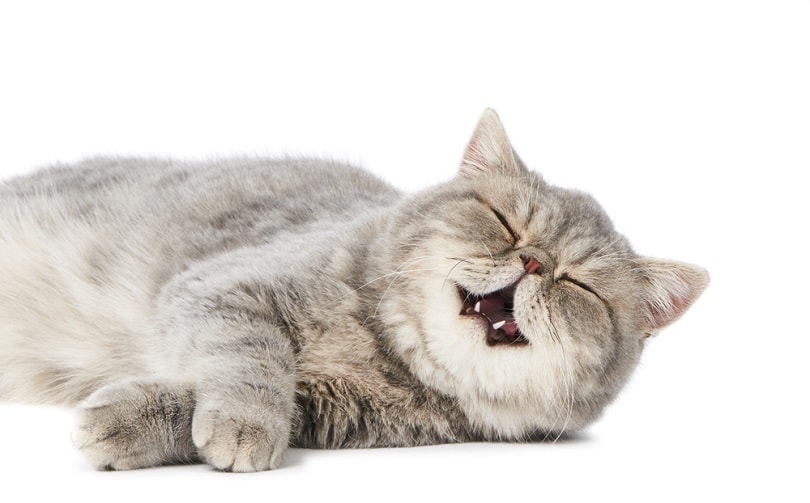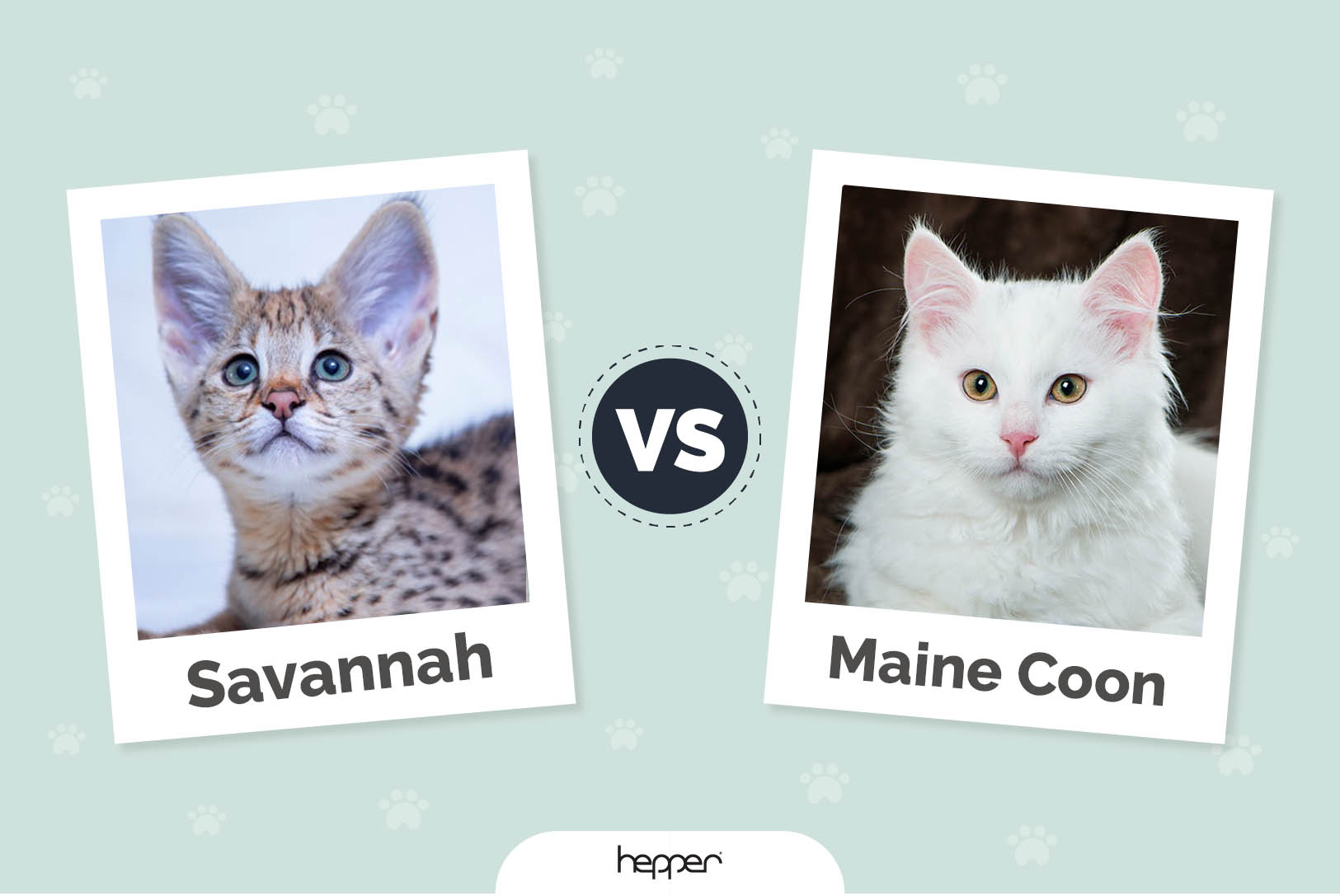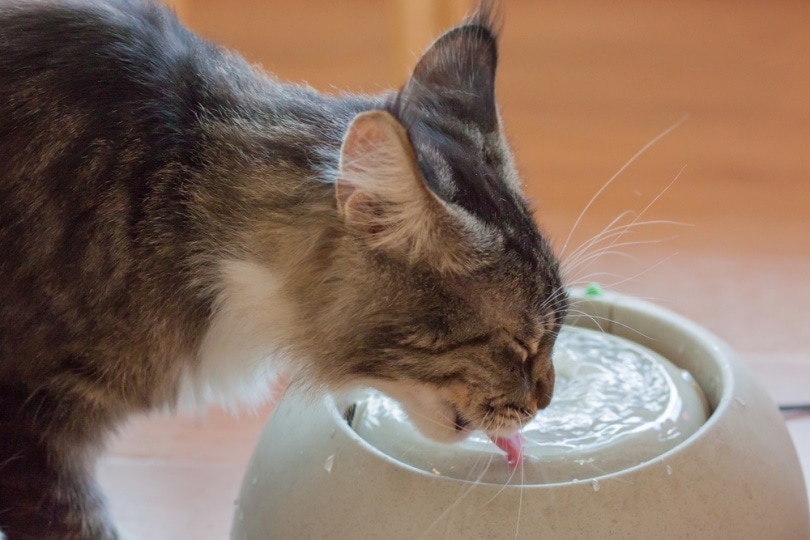What Is the Jacobson’s Organ (Vomeronasal Organ) in Cats? Vet-Approved Facts
Updated on

Have you ever seen cats suddenly make a funny face, as if a smell disgusts them? This may happen around other cats or near a litter tray for example. In fact, your cat’s grimace is not related to the possible foul odor of a passing cat; rather, your feline companion is analyzing something new. By opening their mouth and curving their upper lips, your cat is providing maximum exposure for the information to travel to a specialized sensory organ located inside the nasal cavity, just behind the upper incisors. This is Jacobson’s organ, also known as the vomeronasal organ and is used for detecting chemical signals that have no smell.
Jacobson’s Organ: How Does It Work in Cats?
Jacobson’s organ is found in some mammals (including some humans), as well as most reptiles and amphibians. This organ is part of the chemosensory system and is considered “a secondary olfactory system that mediates a variety of behaviors [in animals], ranging from mating to attack-fighting responses.”
In cats, this organ serves as an additional tool to improve their understanding of the physiological state of other cats around them. It is located inside the nasal cavity and opens into the roof of the mouth, just behind the upper incisor teeth. This special pathway enables pheromones, chemical signals, collected in the nose and mouth to be transported to the brain. So, when cats encounter a new companion, they may open their mouths and use their tongue to send it to the vomeronasal organ, which then sends signals to the brain for interpretation.
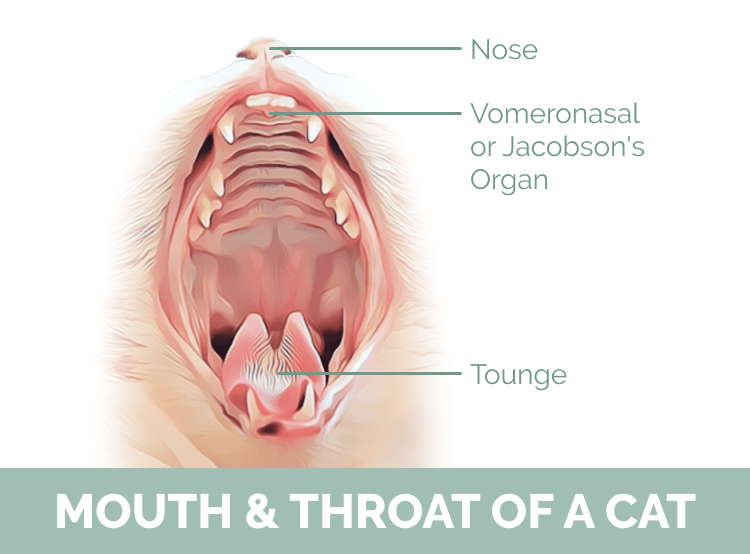
What Is the Role of Jacobson’s Organ in Cats?
Unlike the olfactory cells in the nose used to detect smells, the receptors in Jacobson’s organ are chemoreceptors. These receptors pick up chemical signals that have no smell, called pheromones. Since cats use pheromones to communicate with each other, the Jacobson’s organ helps them detect these signals and react accordingly.
This special organ plays a crucial role in various feline behaviors, including mating, territorial marking, and social bonding. For example, a female cat in heat releases pheromones that signal her availability to potential mates, while a male cat may use pheromones to mark his territory and warn other males.
Overall, Jacobson’s organ acts as a secondary sense for cats and enables them to analyze pheromones to communicate with other cats, and navigate their surroundings.
What Is the Flehmen Response in Cats?
A Flehmen response is what explains the funny face that cats make when they encounter an interesting smell: They open their mouths, curl their upper lips, and flick their tongues to send air toward their Jacobson’s organ. The Flehmen response is simply what enables cats to send the new scent through the vomeronasal organ for further analysis.
How Do Cats Use Pheromones to Communicate?
Cats use their glandular systems to communicate with their congeners in different ways. They do this by releasing pheromones, which are detected by receptors in Jacobson’s organ and sent to the central nervous system.
Here are a few examples of how cats use pheromones to communicate:
- Territory Marking: Cats have scent glands on their cheeks, face, and paws, and the base of their tail. When they rub against objects or people, they leave behind pheromones, which constitute their personal imprint and enable them, among other things, to mark their territory. This is why cats often rub their face or tail against furniture, doors, and even their favorite people!
- Social Bonding: When cats live together under one roof, they use their sense of smell and pheromones to bond with each other. For example, mutual grooming helps keep their fur clean and strengthens their bond through shared scents.
- Mating: When a female cat is in heat, she releases pheromones that signal her availability to potential mates. Males also release pheromones to signal that they are ready to mate.
- Stress Signals: Cats can release pheromones when they are stressed or anxious. This can happen when they are introduced to a new environment, meet a new animal, or experience a change in their routine. These chemical signals make it possible to signal to other cats that they feel stressed.
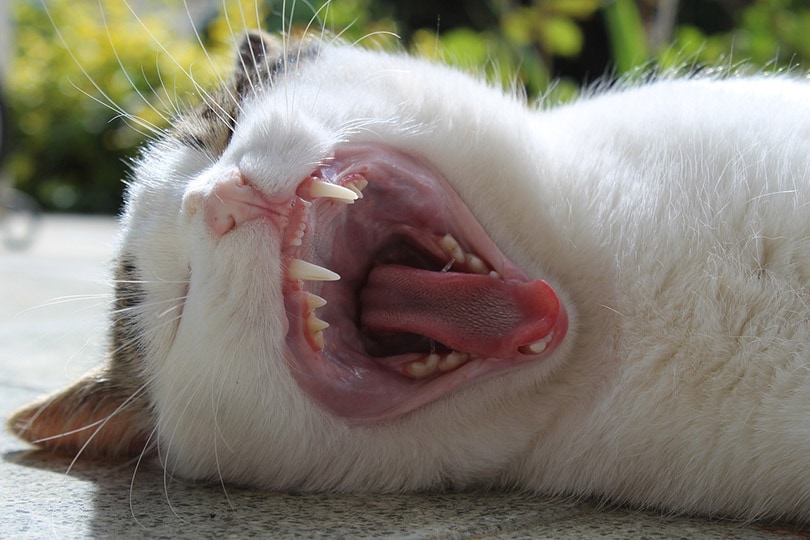
Conclusion
Jacobson’s organ is a cat’s extra sensory organ located on the roof of their mouth. When cats display a Flehmen response—that weird face they make when encountering new information—the signal is being carried to the brain. Since smell is an extremely important sense for communication between felines, it only makes sense that they would be equipped with a special organ to take their communication diagnosis to the next level!
Featured Image Credit: Elisa Putti, Shutterstock



